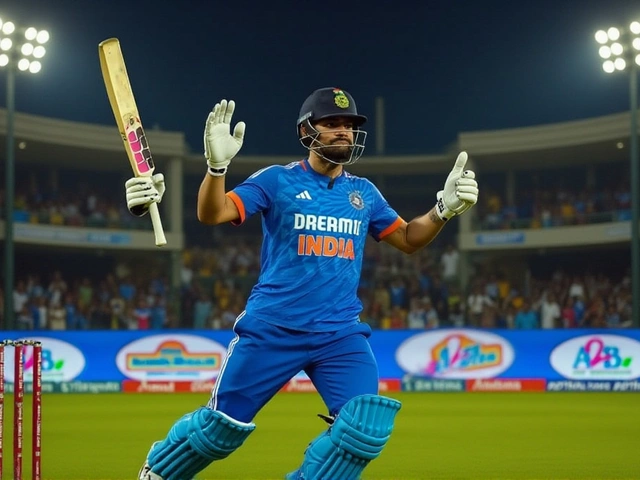India fall short in tight Group A
A nine-run wobble against Australia and a 58-run blow from New Zealand. That was the thin line between India’s women and the knockouts at the Women's T20 World Cup 2024 in the UAE. India ended third in Group A with 4 points from four games, behind an unbeaten Australia (8 points) and a sharp, efficient New Zealand (6). The margins were small in one game and brutal in another, and together they shut the door.
The group always looked unforgiving. Australia arrived with depth on both sides of the ball and played like it, sweeping all four matches with a net run rate of +2.223. New Zealand recovered quickly from their lone slip and secured the second semi-final ticket with 6 points and +0.879 NRR. India’s 4 points came with a positive +0.322 NRR, but the math only matters if you’re level on points. They weren’t.
India’s campaign had two clear faces: dominant when they set the tone early, and scratchy when forced to chase the tempo. The opener against Sri Lanka showed their best side—intent up front, calm through the middle, and ruthless with the ball. The last two games against Australia and New Zealand exposed the other side—too many dot balls, not enough control at the death, and a middle phase that drifted.
Key results that framed the group:
- Sri Lanka: India 172/3 in 20 overs (Harmanpreet Kaur 52*, Smriti Mandhana 50); Sri Lanka 90 all out in 19.5. India won by 82 runs. A complete performance that set a strong net run rate base.
- Pakistan: Pakistan 105/8; India 108/4 in 18.5. India won by 6 wickets. Job done, but the chase took longer than it needed to, hinting at a sticky middle overs trend.
- Australia: Australia 151/8; India 142/9. India lost by 9 runs. The chase never fully clicked, with the final overs leaving too much to do.
- New Zealand: India lost by 58 runs. The most damaging result, both on momentum and on the scoreboard.
On paper, two wins from four keeps you in the hunt. In practice, the route was tighter. Losing to Australia reduced the room for error. The heavy defeat to New Zealand removed it. That one game swung the group picture, confirming New Zealand’s place and leaving India stranded in third.
How much did net run rate matter here? Not in a tiebreak sense—India were short on points anyway—but it told a story. That 82-run win over Sri Lanka showed how destructive India can be when they set up the game early. The 58-run loss to New Zealand showed how quickly things can unravel if the chase stalls and the bowling can’t claw it back in the second half.

Why it slipped and what it changes
India’s batting had clear high points—Harmanpreet Kaur’s unbeaten 52 against Sri Lanka and Smriti Mandhana’s crisp 50 in the same game—yet the rhythm wasn’t stable across the tournament. Against Pakistan, the chase of 106 drifted into the 19th over. Against Australia, the asking rate ballooned late. Those two matches were reminders: in T20s, the middle overs often decide the last five.
Three phases defined India’s batting story:
- Powerplay: When the openers fired, the rest flowed. When they didn’t, the side spent the middle overs repairing instead of accelerating. The team needs a repeatable template for 45–50 in the first six more often than not.
- Middle overs: Too many dots against disciplined pace and smart spin. Rotating strike is the engine; India sometimes looked stuck between playing out a bowler and attacking the wrong ball.
- Death overs: The finish was missing in the tight chase. Against Australia, the last five overs didn’t deliver the boundary burst needed to tilt a nine-run margin.
With the ball, India were at their best when they owned lengths early and controlled the pace on a used surface. That was the Sri Lanka game. When the pitch was truer or the batters countered, the plan needed a sharper pivot. Australia’s middle order soaked up pressure and punished errors. New Zealand pushed hard in both halves, and India couldn’t slow the rate soon enough.
Fielding was mixed. There were tidy boundary saves and clean work around the circle in the big win. In the two defeats, half-chances went down and singles turned into twos. That’s a common thread in T20 losses—one or two moments don’t look huge on the day, and then you add up nine runs.
Selection and roles usually look perfect in wins and uncertain in losses. India carried a balanced core—top-order stroke-makers, a flexible middle, all-round options, and variety in spin. The question is usage. Could the batting order have been one spot braver when the chase lagged? Could an extra over from a set bowler have come earlier to break a stand? The answers are never obvious in real time, but they shape outcomes in tight games.
The Australia defeat was a blueprint lesson. India kept the target in range but didn’t land the punch in the last third. Singles were available; boundaries were hard to find. Australia closed the game with strong angles and precise yorkers, and India couldn’t access the straight hit or the gap behind point often enough.
The New Zealand loss was different—less about a final-overs miss and more about early control. Once the chase fell behind the rate, risk grew, and wickets followed. That is the spiral T20 teams fear: dot balls, desperation, dismissals, repeat. New Zealand executed, India chased the game, and the result swelled beyond a bad day into a decisive swing in the table.
Group B added another twist to the tournament’s tone. West Indies and South Africa went through with 6 points each, while England, also on 6, missed out on net run rate. That underlined how ruthless this format is. It’s not only how many you win; it’s how you win and how you lose. A team can do a lot right and still be nudged out by decimals.
So where does India go from here? The raw material is strong. Harmanpreet Kaur and Smriti Mandhana anchored key wins. The batting has power at the top and touch in the middle. The bowling mix has swing up front, cutters for the middle, and spin options that can control or attack. The gap is in consistency across conditions and match states.
What the staff will likely double down on now:
- Clear powerplay targets: 8–9 an over with low risk, not 6s-or-bust. Use angles, late cuts, and gaps to keep the rate ticking.
- Strike rotation in the middle: plan specific matchups for busy singles—defuse the opposition’s best over rather than blocking it out.
- Death-over patterns: pre-set finishing roles, with defined boundary options—pace-on swings straight, pace-off picked behind square.
- Bowling flexibility: one over of surprise pace or spin where the batter least expects it; hold a matchup for the key wicket.
- Fielding detail: fewer fumbles, cleaner relay throws, and practicing two-run saves. Those are hidden runs that decide nine-run games.
- Game awareness: communicate the par score every two overs in a chase; no surprises when the asking rate jumps.
There’s a wider picture too. The domestic pipeline keeps getting stronger. Players are arriving more ready for the pace of international T20 cricket—better range against spin, smarter options against wide lines, and more power down the order. The next step is stitching that individual skill into team patterns that don’t depend on a single player having a great day.
In knockout tournaments, timing matters as much as talent. India hit stride against Sri Lanka, did enough against Pakistan, then ran into two sides who squeezed them in different ways. Australia absorbed pressure and shut down the chase late. New Zealand front-loaded the pressure and kept it there. Two different defeats, one shared lesson: control the middle, and the end will take care of itself.
The semi-final lineup reflects that same theme. Australia’s control never dipped. New Zealand made their big win count at the right time. In Group B, West Indies and South Africa took their moments and protected their net run rates when things got tight. England learned the hard way how thin the margins are when teams finish level on points.
For India, the exit hurts because the pieces are there. The captain scored runs, the senior opener set platforms, and the attack had days where it looked a handful. What separated progress from exit was the day-to-day repeatability—turning a chase of 150 into a method, not a mission, and switching tactics mid-innings without losing shape.
None of this needs a reset. It needs clarity: who attacks which bowler, where the extra run lives on a slow pitch, which fielder takes ownership of the ring, when to use the slower ball versus banging the hard length. Win those mini-battles and you don’t leave yourself a nine-run gap to explain away.
The scorecard will show two wins and two losses. The tape shows something closer: a team good enough to beat most sides, still searching for the extra 5–10 percent that flips tight contests. That’s the work between now and the next big event—locking in the patterns that turn promise into points, so the group stage isn’t the finish line.






